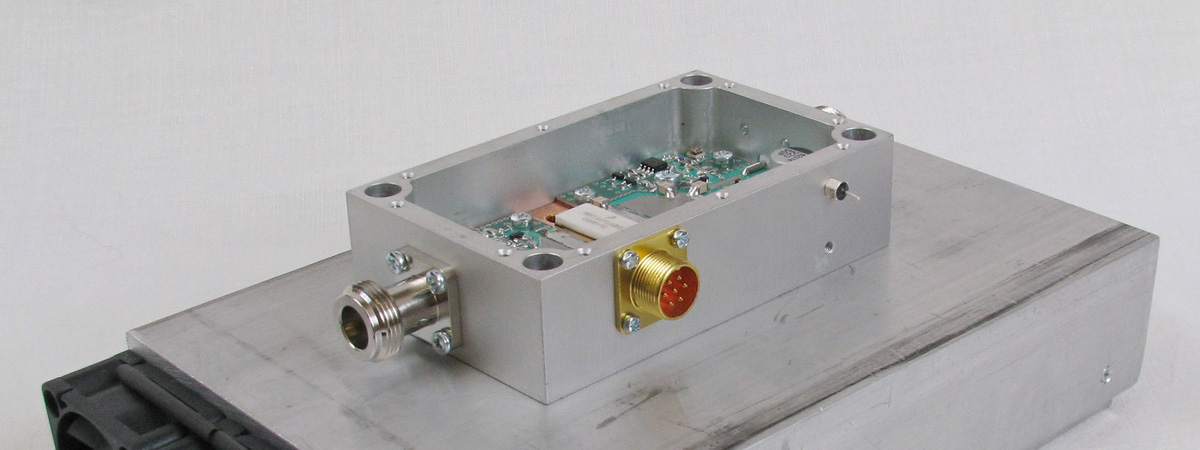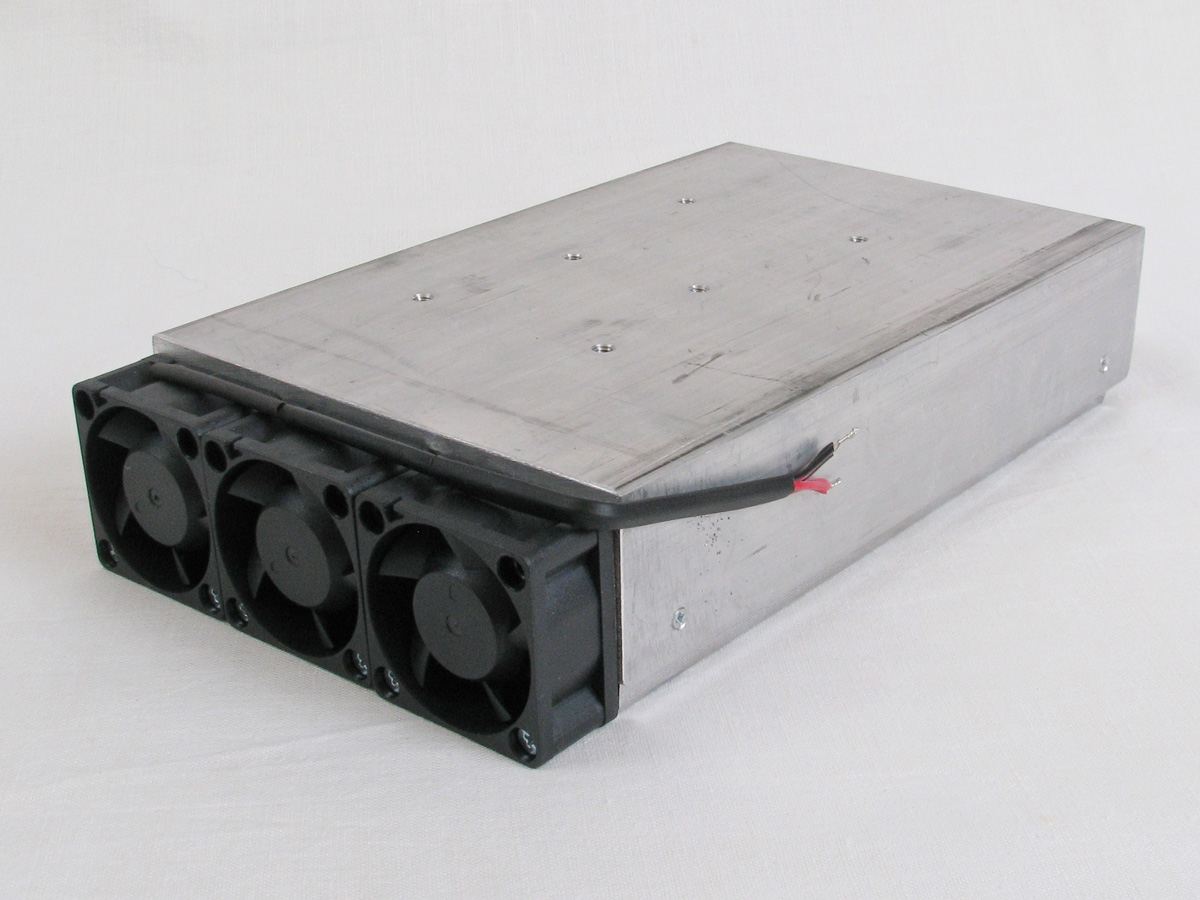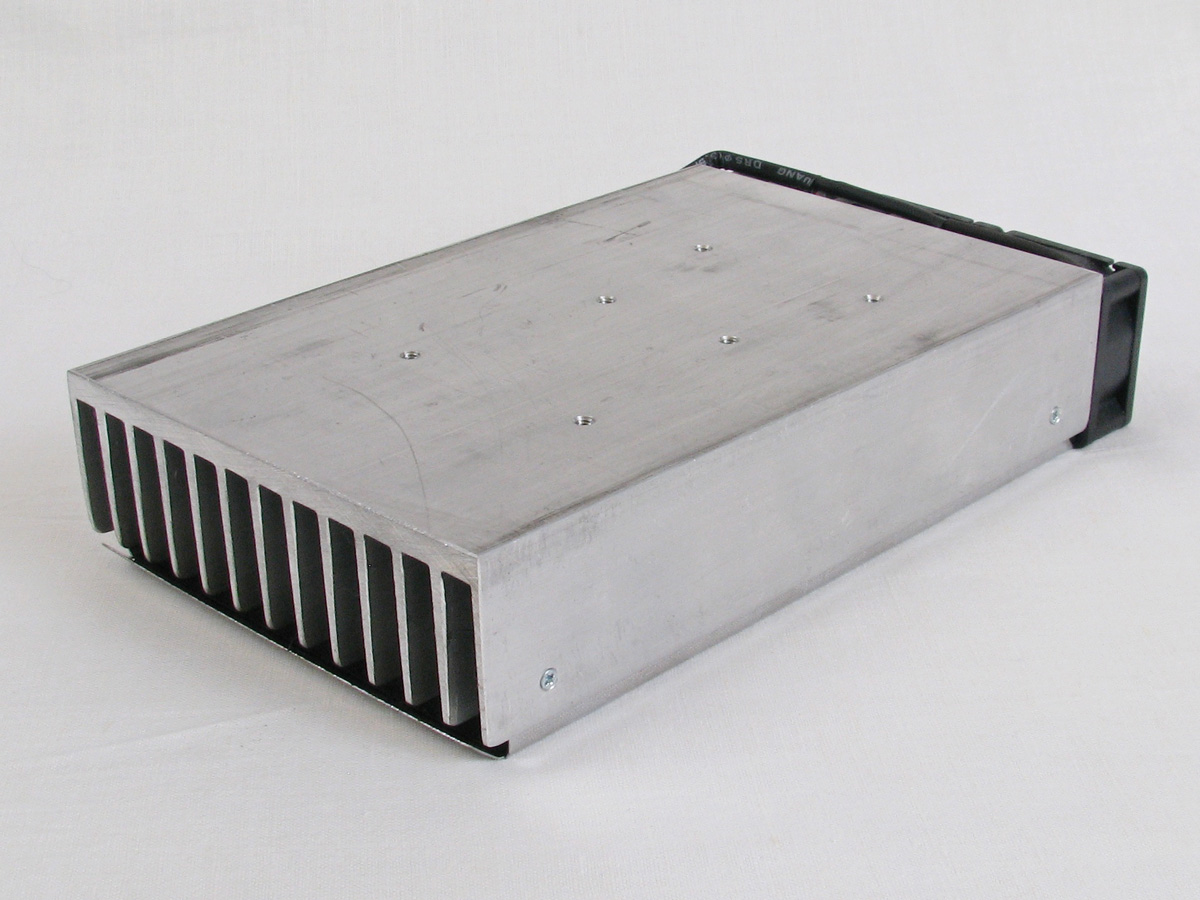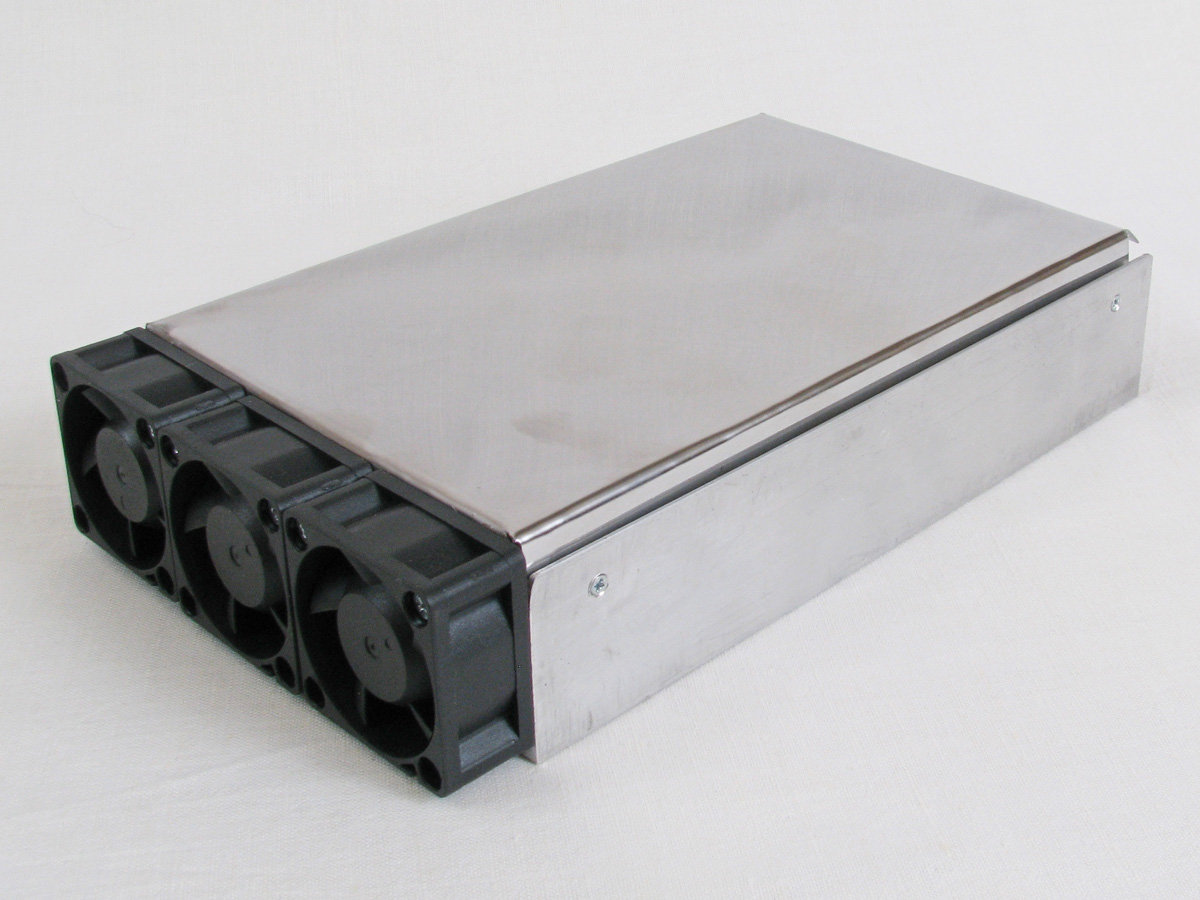We are pleased to present a cooperative development of Pavel US4ICI and Sergey US2IDR – PA 23cm 150 Watt. РА 23cm DF9IC was taken as a prototype of this development.
I have watched for results of testing a Wolf-Henning Rech PA by different authors for a long time. Many of them was note a huge heating of the capacitors in the output matching circuit. This datashet and simulation results are led to a construction that described in this article.
MRFE6S9160 transistor was designed for a GSM-based stations and used with a output power of 35 Watts usually. Its operating frecuency range that specified in documentation is 865 — 960 MHz. There is no information of possible usage of this transistor for a 23cm band. MRFE6S9160 is removed from the production currently and you can find it on sale on the recovered components market only.
PA simulation
The first modeling experience of PA based on nonlinear transistor model was took a lot of effort. Different variants of matching circuits was tested. RO4003C 0.508 mm, Arlon 25N 0.76 mm and FAF4 1mm was used as a PCB materials. All of them are suitable for this PA. I stopped on a RO4350 0.76 mm laminate.
A several stages of the resistance transformation (input and output) was used to expand the bandwidth of matching circuits and reduce the heating of the capacitors.
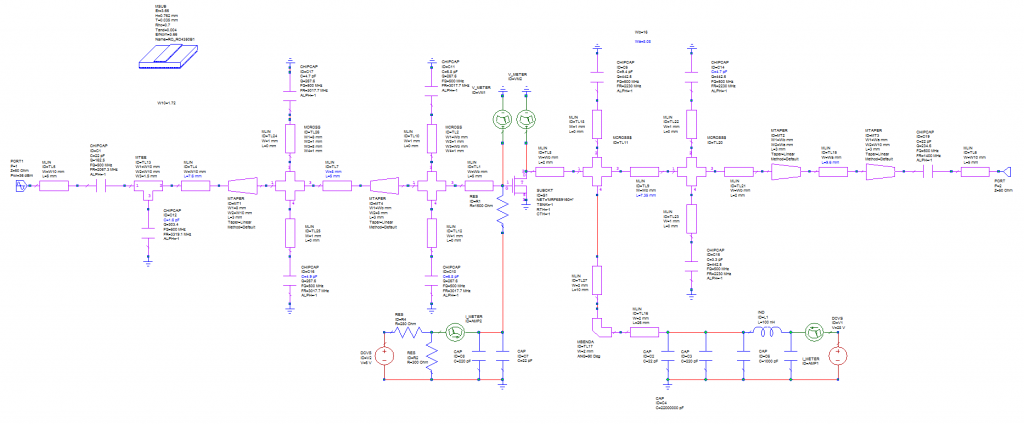
PA is optimized for maximum power output, efficiency and input VSWR. Maximum power is achieved not with the best PAE. So we’re forced to reduce P out for better PAE.
Project modelling characteristics:
- Pout: 187 Watt
- PAE: 66%
- VSWR IN: 1.03 (1296 MHz)
- Gain: 16.7 dB при VDC = 28 V, Pin = 36 dBm
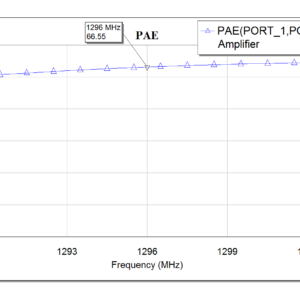
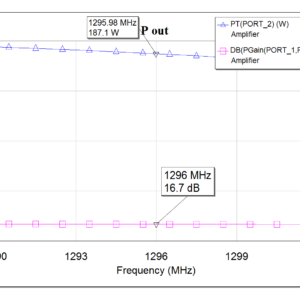
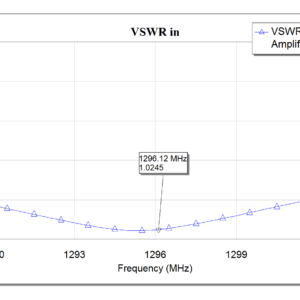
PA 23cm design features
PA schematics contains the following:
- transistor’s input and output matching circuits
- voltage stabilization bias circuit with temperature compensation
- direct and reverse directional couplers with detectors
- transistor’s digital temperature sensor
Transistor bias stabilization circuit was assembled by following to Ampleon CA-330-11 recommendations. PA contains transistor’s current temperature compensation circuit controlled by gate bias, VSWR and RF Power detectors, PTT control, digital temperature sensor. Schematics is shown on Fig. 3
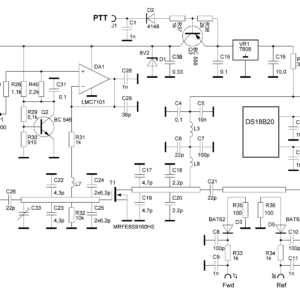
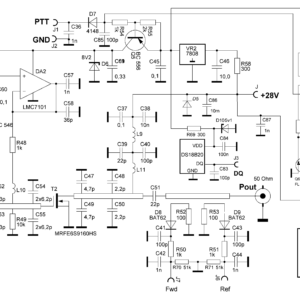
(update from 2017-05-10)
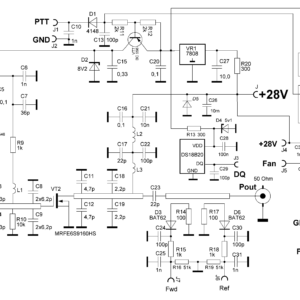
(update from 2018-02-01)
PA housing material is made from aluminum plate D16 by milling on a CNC machine. For effective heat removal, transistor is soldered to the cooper insert. N-female connectors are used for transceiver and antenna connection. DC Power should be provided through the pass capacitor.
PA is constructed as a block that should be mounted on the radiator. Unlike a «pallet» (PCB on a copper plate) this is a complete solution with RF flange mount with micro-strip N-type female connectors on-board. This 50 Ohm connectors provide a good matching with micro-strip line of the PCB. “7-pin” connector pinout is shown on Fig. 4.2
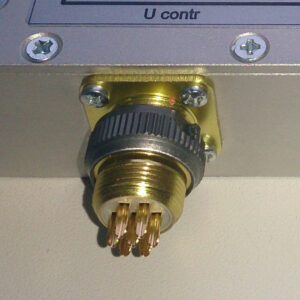
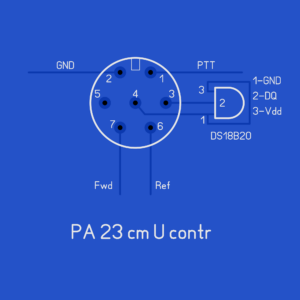
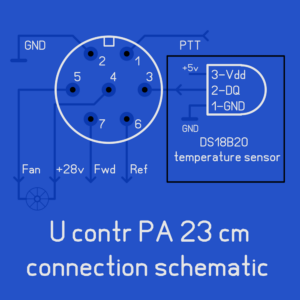
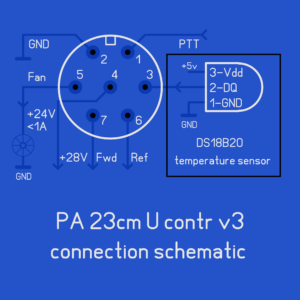
In the bottom of the housing (under PCB) located milled grooves for the wires from the sensors. Radiator dimensions drawing is shown on Fig. 5. During the tests we come to conclusion that 1500 cm m2 radiator area is enough for heat removal, with 3 x 40mm fans (6500 rpm) installed on the ribs. Tests were made in WSJT mode with 1 min cycles.
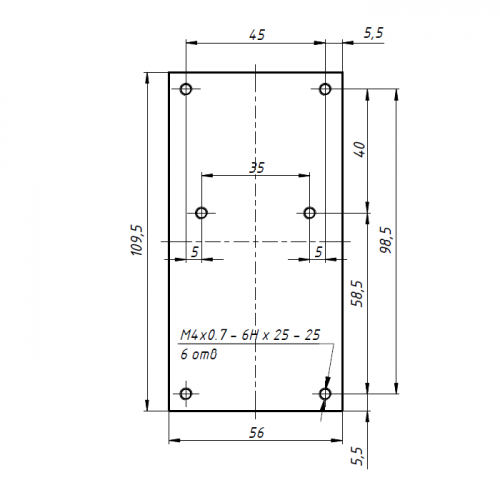
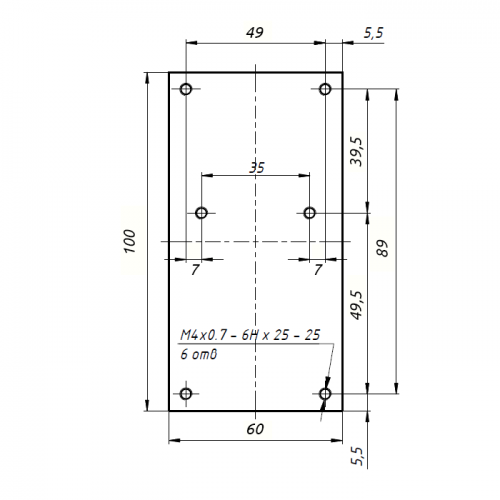
Amlifier PCB is made on RO4350 laminate, 0.03 inches, 1 oz. Input and output parts of the PCB are separate. Board dimensions is 98×45 mm. PCB mounted on the bottom of the housing with M2.5 type mounting screws. DS18B20 temperature sensor is mounted on a copper insert with a thermal grease. In the output matching circuit ATC100B type capacitors are used. PA-23cm-150W PCB is shown on Fig. 6
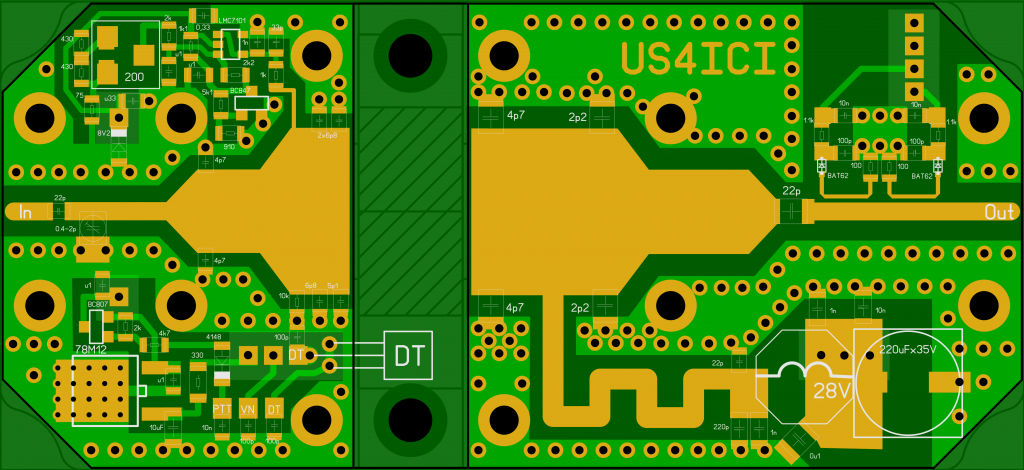
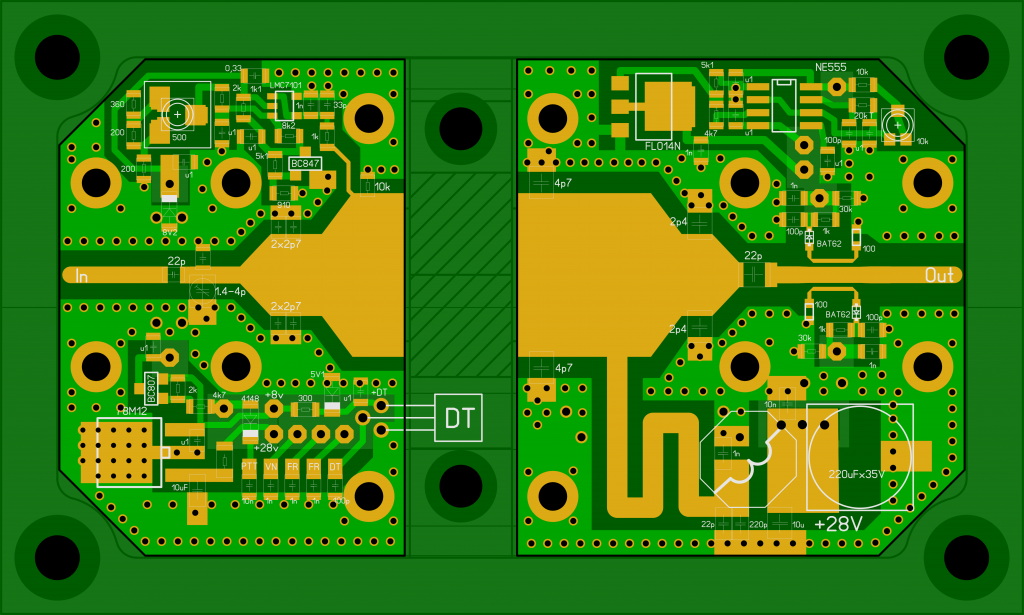
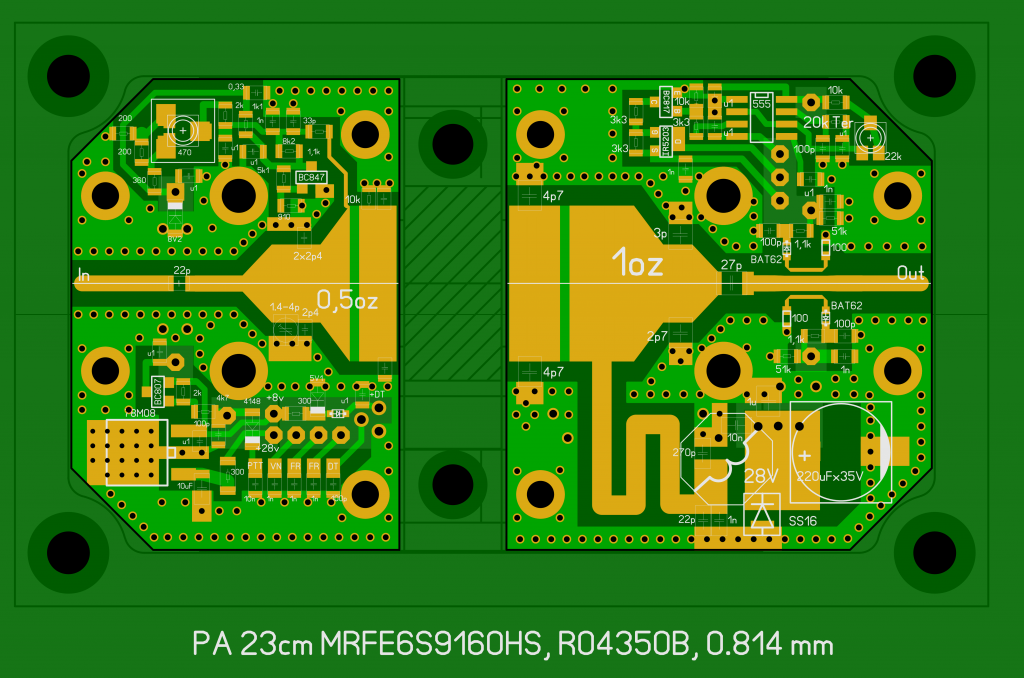
PA block placement depends of the preferences and possibilities of the amateur. Close to the antenna placement is preferred.
РА 23cm 150 Watt testing
PA was assembled and tested on a radiator (122x200x35 mm dimensions) with three fans 40x40x20 mm. Transistors have parameters spread, one PA with a less power build-up showed 210 Watts. 2nd PA with 5 Watt build-up showed 190 Watts. With continuous heating, copper insert temperature grow up to 60°C in 3 minutes (Pout = 150 W). No PCB heating over this temperature or ATC100B capacitors. PA was tested with closed housing cover.
Initial current is set to 0.5 A. In 25 – 60°C temperature coverage initial current stability is 20 mA.
PA specs not worse than:
Pin < 6 Watt, Pout = 150 Watt (JT65, FM), Pout = 180 Watt (CW, SSB), IDC < 12 A, UDC = 28 V
Output power, Pout versus Input power, Pin measurements represented in the tables below:
| Output Power, Pout | Input Power, Pin | Current, Idc |
|---|---|---|
| 20 | 0.34 | 4 |
| 50 | 0.8 | 6 |
| 80 | 1.2 | 7 |
| 100 | 1.48 | 7.8 |
| 120 | 1.85 | 8.8 |
| 150 | 2.58 | 10 |
| 180 | 4.48 | 11.1 |
| 200 | 8.67 | 12.8 |
| Output Power, Pout | Input Power, Pin | Current, Idc |
|---|---|---|
| 10 | 0.35 | 3 |
| 20 | 0.68 | 4.2 |
| 30 | 1.3 | 5.5 |
| 40 | 2.6 | 7 |
| 50 | 5.3 | 8 |
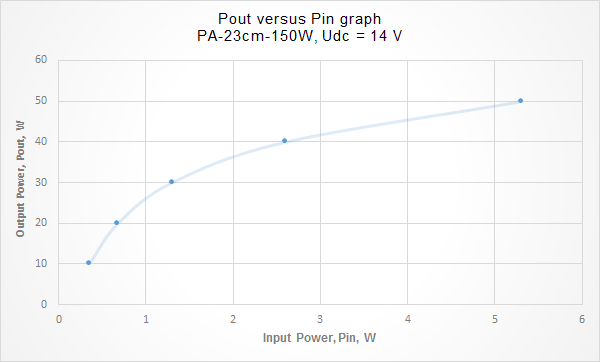
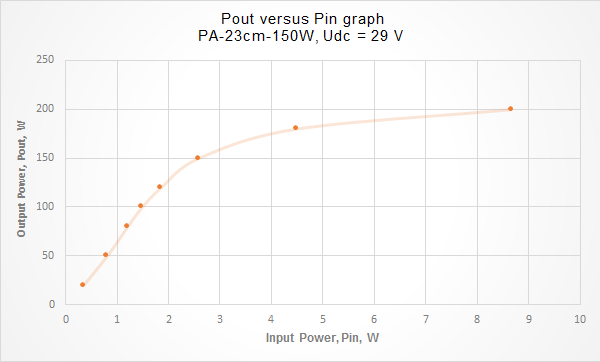
Conclusion
You can setup PA 23cm 150W block near antenna or assemble a complete solution with power supply, RF Power and temperature display, protection and automation.
Edition of this PA on two MRFE6S9160 transistors with power up to 300 Watts will be described in another article.
PA 23cm 150W technical specifications
- Model: PA-23cm-150W-N-female
- Based on MRFE6S9160HS transistor
- RF Range: 1260 — 1300 MHz
- P input TX < 6 Watt
- Pout = 150 Watt (JT65, FM)
- Pout = 180 Watt (CW, SSB)
- Supply operation: 28 V DC at IDQ = 12 A (TX)
- Impedance: 50 ohms
- RF connectors: N-female
- Dimensions: 100 mm x 60 mm x 28 mm (w/o connectors)
- Weight: 0.45 kg
- Assembled in Ukraine
KIT includes
- 1 x PA-23cm-150W-N-female
- 1 x Mounting screws KIT
- 1 x 7-pin female connector
Appearance
Optional heatsink supply (for PA-23cm-150W-pallet installation)
